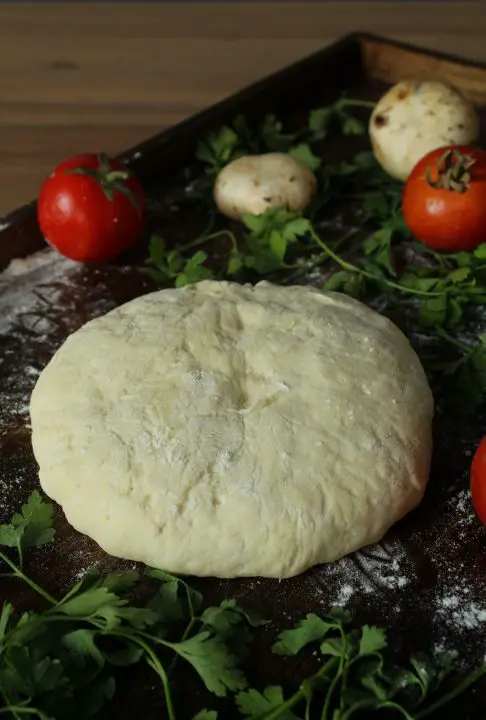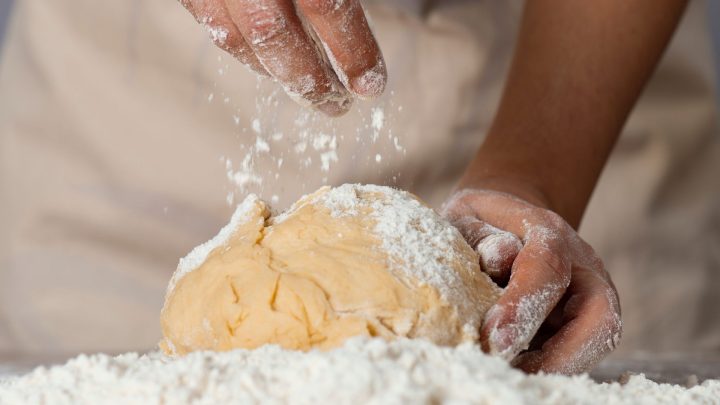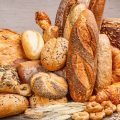What makes bread dough different from pizza dough? Many of us struggle to find the distinction between the two, simply because dough is dough. But I’m here to change that, because contrary to what you may wish to believe, there are significant differences between the two kinds of doughs, and we’re going to unravel them piece by piece. Here are some of the key differences between the two doughs.

Table of Contents
- Bread Dough vs Pizza Dough
- Can You Swap Pizza Dough And Bread Dough?
- Uses For Leftover Pizza Dough
- Uses For Bread Dough
- Bread Dough vs Pizza Dough
- Bread Dough vs Pizza Dough FAQs
Bread Dough vs Pizza Dough
While bread dough and pizza dough have some obvious similarities, i.e, both are made from flour and water, there are some clear distinctions between them.
Let’s take a look at some differences and similarities between the two kinds of dough.
Ingredients
The ingredients of bread dough and pizza dough are pretty much the same. You can make pizza dough from bread flour, water, salt, oil, and leavening, which could be commercial yeast or a sourdough starter. Likewise, you can make bread dough from exactly the same ingredients.
Albeit, bread dough can often include additional ingredients compared to pizza dough. Bread dough can include, eggs, butter, cream, milk, some sugar, and an array of other ingredients.
Pizza dough doesn’t contain many flavorings simply due to its delicious toppings.
Compared to bread dough, pizza dough has a lower fat content, though this doesn’t affect the toppings you choose to add to it.
Moisture Content
Generally, bread dough has a higher moisture content compared to pizza dough, simply because bread dough requires a more water-to-flour ratio.
The oil content in pizza dough delivers a hydration level of 50-70%, while bread doughs can reach up to 90% hydration.
Gluten
One of the main differences between the two types of dough is the gluten levels.
Pizza dough requires a higher level of gluten, as the dough must be able to stretch and expand to make that wide, circular, tomato sauce-based treat we all know and love.
On the other hand, bread dough does require great gluten development, however, it doesn’t necessarily need to be as stretchy as pizza dough, because its purpose and outcome are completely different from pizza dough.
While pizza dough is often made with a higher protein flour (bread flour), bread dough can also be made with bread flour. Although sometimes, bread dough can be made with a lower protein flour, like all-purpose flour.
Kneading Process
The kneading process of both types of dough differs. Kneading is a strategy used to create the stongest gluten networks in the dough.
Both bread and pizza dough require a strong gluten network, however, pizza dough generally contains more gluten compared to bread dough, as it’s often kneaded vigorously for a increased elasticity.
For the perfect pizza dough recipe, you’ll want a chewier crust, compared to a softer sandwich style bread. Although, sourdough bread’s chewy crust is very much appreciated.
Fermentation
Both bread dough and pizza dough require a specific rising time, i.e., fermentation at room temperature, so that the dough can rise nicely. This will depend on whether you’re using commercial yeast or a sourdough starter for your dough.
If you’re using a starter, the dough rise time is generally referred to as fermentation.
The difference between both doughs is that pizza generally requires a shorter rise compared to bread dough, unless you’re using a sourdough starter in your pizza dough.
Cooking Method
The cooking methods for both types of dough can be quite different depending on the type of pizza or bread you’re making.
Pizza is often placed on a pizza stone, and baked at very high temperatures.
Bread is baked at a lower temperature in a loaf tin, or cast iron pot i.e., a Dutch oven. Although artisan bread can also be baked on a hot stone depending on the type of crust you’re hoping to achieve.
Bread requires steam to create a crisp crust, whilst pizza does not as it is baked on a stone at high heat.

Can You Swap Pizza Dough And Bread Dough?
The answer depends on the ingredients in the dough. For instance, you couldn’t make piza out of brioche dough, or make brioche from pizza dough.
A basic bread dough that has no fat or dairy is probably the best dough to swap with pizza dough. Similarly, pizza dough with olive oil added to it could be used as regular bread dough and baked into a delicious loaf of bread.
The type of dough you use will also determine what type of crust you’re hoping to achieve. Thin crust pizzas are very different to thick crust pizzas. You may need to change the type of flour you’re using to achieve these results.
Bread dough is often best used for a deep pan pizza, and not necessarily a thin pizza.
Uses For Leftover Pizza Dough
When you’ve made some homemade pizza dough the night before, but have some leftover pizza dough, and aren’t too keen on having pizza two nights in a row, then here are some interesting yet delicious things you could do with your pizza dough.
- Focaccia dough – this is especially great for pizza dough that has been stretched to its maximum ability. You can add any kind of topping you like, for a delicious finish!
- Cheese sticks – cheese sticks are super easy to make from pizza dough. You can simply sprinkle some cheese on your dough, cut it into strips, twist the dough and bake! Dip these into marinara or tomato sauce for a delightful treat.
- Pizza rolls – roll your leftover pizza dough balls with your favorite toppings, for a fun and creative pizza treat.
- Seasoned flatbread – use your leftover pizza dough, and flatten it into a round, slather with oil oil and bake with your choice of seasonings.
- Calzone – wrap some of your favorite ingredients inside of your pizza dough, for a scrumptious calzone.
- Pizza pocket – load bacon, cheese, pizza sauce, and pineapple chunks into the dough, and bake for a delectable snack.
Uses For Bread Dough
Got some leftover bread dough you have no idea what to do with? Here are some delicious suggestions of what you could do with your bread dough:
- Cinnamon rolls – basic bread dough can be transformed into plush, sweet and spicy cinnamon rolls, simply add a filling of brown sugar, white sugar, butter and vanilla.
- Garlic knots – bread dough makes incredibly delicious garlic knots of garlic rolls. They’re super easy to make. Simply brush with garlic butter, and season with your favorite herbs for a divine finish.
- Deep dish pizza – bread dough also makes a delightful deep dish pizza. You only need a cast iron skillet or cast iron pizza pan to make this amazing deep dish pizza. Top with tomato sauce, mozzarella cheese, and some of your favorite meats for a delightful bread dough recipe.
- Burger buns – burger buns are a super easy way to make use of any frozen bread dough. Add an egg wash, and sesame seeds for a delicious batch of patties.
- Pretzels – you can even use bread dough to make pretzels. Simply shape the dough into pretzels, and once they’ve doubled in volume, boil them in a honey water bath. Sprinkle with salt and bake!
Bread Dough vs Pizza Dough
Since bread dough typically requires more ingredients for a subtle yet flavorful finish, there isn’t much we can say about using them both interchangeably. However, if you’re trying to make use of some leftover pizza dough, and wish to bake a simple bread, then go for it!
Bread Dough vs Pizza Dough FAQs
Is Pizza Dough The Same As Bread Dough?
While they may be similar, both bread dough and pizza dough have different formulas. For instance, the amount of salt, water, and oil varies. Though they both consist of whole wheat flour, and white flour and some are even made into sourdough bread.
Is Pizza Dough The Same As Naan Bread Dough?
Not entirely. The key difference between pizza and naan lies in the dough While pizza dough is made of flour, yeast, salt, and water, naan dough is enriched with dairy.
Is Pizza Dough Better With Bread Flour or All Purpose?
If you’re looking for a chewier pizza crust then use bread flour. Bread flour is higher than protein compared to all-purpose. Higher protein means higher gluten, meaning that the dough is less likey to tear.






